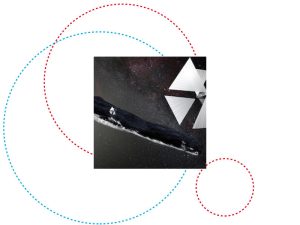In the true instruction manual for exploring the galaxy there will not be hints about towels, tea, and bad poetry like in the popular Sci-Fi novel by Douglas Adams. Instead, reaching interstellar objects will involve solar sails, tractor beams, and laser arrays — which to many also seems like science fiction; but not for the scientists and engineers who are preparing to launch the early missions using that technology.
On 17 May a group of top-level researchers from around the world gathered in the Neimenster Abbey for a two-day workshop about solar sails, as part of the Breakthrough Initiatives. The Breakthrough Initiatives are a suite of space science programmes investigating the fundamental questions of life in the Universe: Are we alone? Are there habitable worlds in our galactic neighborhood? Can we make the great leap to the stars? And can we think and act together – as one world in the cosmos?
The workshop, hosted by the Breakthrough Foundation and the University of Luxembourg’s Interdisciplinary Centre for Security, Reliability and Trust (SnT), focused on the implementation possibilities of solar and laser sails for space exploration. Solar sails have been in development for decades, and following the launch of the JAXA IKAROS mission in 2010 are now building a proven track-record.
Solar sails are now a realistic foundation for space exploration for two main reasons. Firstly, because more precise navigation is possible, which was not the case before. Now that their trajectory can be controlled more accurately it makes sense to send them on missions to observe or make contact with deep space objects.
Secondly, the advent of CubeSat technology makes it realistic to attach a payload to a solar sail, which can only achieve a good velocity if it is not loaded down with objects of significant mass. CubeSats are now an accessible technology that delivers the mission capabilities needed in a lightweight format.
“What we need this workshop to discuss is big science in small packages! That is the point here,” said Dr. Slava Turyshev from NASA’s Jet Propulsion Laboratory (JPL) in his keynote remarks on the first day. “There are plenty of applications for these types of instruments in the solar system. We are talking about solar polar regions, interstellar medium, interstellar turbulence… The technology is opening up a significant number of interesting missions.”
Turyshev used his keynote to explain the advancements he and the team have made on the SunDiver Mission, which is the solar sail vehicule that they are developing. They expect to launch in only a few short years, for a reasonable sum in the low millions instead of the billions that would traditionally be required.
“The whole purpose here is to figure out what science can be done and how to do very low-cost missions,” said Pete Worden, Executive Director of Breakthrough Initiatives and former Director of NASA Ames Research Center, in his introductory speech. “We have had a couple workshops already, and this is our first European workshop. My foundation’s interest is that we would like to use this technology to get to the outer solar system to look at places like Europa and potentially find evidence of life in some of these other solar system modes. On to find life!”
The question of where to look for life first is just as important as how to get there, and following the recent pass of the interstellar object Oumuamua scientists have been left with many open questions regarding the origins of Oumuamua, including the hypothesis that it could be of alien origin.
“The question of course is can we reach Oumuamua or other interstellar objects with a SunDiver like space craft?” said Prof. Dr. Andreas Hein, the head of SnT’s recently minted SpaSys research group. Hein’s own work focuses on interstellar travel, and as part of that is the Executive Director of the Initiative for Interstellar Studies, a UK-based not-for-profit company working towards the realisation of interstellar travel. He gave a talk about the different mission designs that could be used to reach Oumuamua.
“When you are talking about interstellar objects the longer you wait the more difficult it gets. If you have a fast enough spacecraft, like the SunDiver concept, you can still launch a spacecraft well into the 2030’s to chase Oumuamua, and it really opens up a whole range of missions,” explained Hein.
One mission type that was touched on repeatedly, and particularly captured the attention of the workshop participants that first morning, was a capture mission, or hard landing mission. These would essentially allow a solar sail spacecraft to hitch a ride on an object, including an interstellar object, potentially allowing us to travel to even the far reaches of our galaxy.
